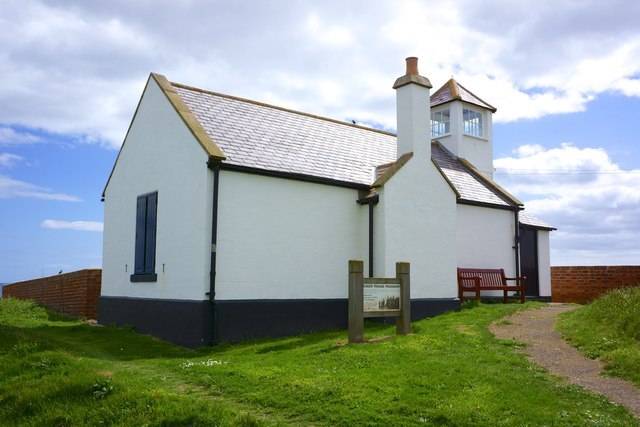The Watch House

The Seaton Sluice Watch House Museum is open to the public, staffed by volunteers from the Seaton Sluice and Old Hartley Local History Society, every Sunday afternoon throughout the summer, from 2 pm to 4:30 pm, and on Heritage Open Days.
The story of The Watch House, and the Volunteer Life-Saving Company, started on the North East coast. At the end of the 18th century, the high volume of shipping and severe winter gales made this coast notorious for shipwrecks. This led to the first purpose-designed lifeboat, the 'Original', being stationed at South Shields in 1789.
HM Coastguard was formed in 1822 to combat smuggling and oversee life-saving from shipwrecks. Due to limited Coastguard resources, shore-based rescuers like the Tynemouth Volunteer Life Brigade were established in 1864. By 1876, a group of volunteers formed the Seaton Sluice Volunteer Life-Saving Company.
A Cart House for rescue equipment was built behind the King's Arms, and on 14th January 1880, the Watch House was opened. Funded by Lord Hastings of Seaton Delaval Hall, it included a Watch Tower, Muster Room, and Coal Store. It is now a Grade II Listed Building under Northumberland County Council.
The rescue method involved a rocket-fired line to the wreck, followed by a hawser and breeches-buoy to transfer crew and passengers to shore. The Company trained bi-weekly in the use of this gear, performing drills at the Mortarfield near the old Melton Constable pub, followed by social gatherings.
The Board of Trade supported these brigades with equipment and funding. When maroons were fired, volunteers would rush to the Cart House and drag the gear to the wreck site. Unlike other brigades that used horses, Seaton Sluice relied on manpower.
In October 1880, they rescued crews of the 'Tre Gebroeders' and 'Mary Ann'. Thomas Langley was awarded for bravery. Coastguard presence predated the Company, with officers stationed as early as 1827. The Watch House was expanded with new Coastguard cottages in 1888.
The 1913 wreck of the barque 'California' was a notable rescue, earning medals for three members. Between 1856 and 1909, over 17,000 lives were saved using rocket apparatus. After WWI, call-outs declined due to better ship technology. Training continued, but in 1966 the Company became part of the Coastguard Auxiliary Service. The Watch House closed in 1990 after 110 years.
By 2003, only three Volunteer Life Saving Brigades remained: Tynemouth, South Shields, and Sunderland. The Watch House now serves as a museum under former Blyth Valley Borough Council.
